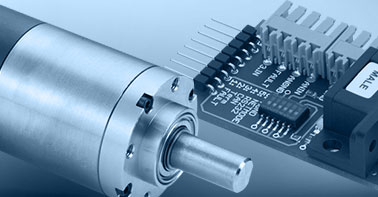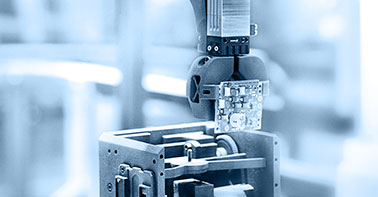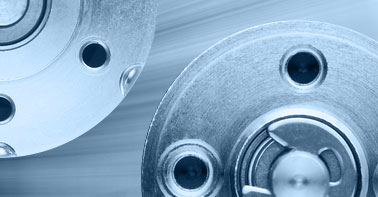- info@ems-ltd.com
- 0118 9817391
DC motor frequently asked questions
Have a question about DC motors and drive systems? Check out our answers here for some of the most frequently asked questions.
DC motor questions
What is a DC motor?
A DC motor converts direct electric current into mechanical energy. Typically, DC motors are comprised of a moving rotor, fixed stator and a commutator.
In a traditional DC motor, current is passed through wire coils to generate magnetic fields on the rotor. These electromagnetic fields interact with the permanent magnet stator fields, causing the rotor to rotate. The commutator is responsible for energising the correct coil at the right angle, ensuring the field interaction in the motor generates movement in the correct direction.
What are brushed and brushless motors?
Small DC motors can be broadly split into two categories: brushed and brushless motors. The difference is in the commutation. Brushed motors operate with a mechanical commutation. Brushless DC motors don’t use any brushes, and instead operate using electronic commutation. To find out more about the differences between brushed and brushless motors, check out our blog here.
What types of DC motor are there?
A variety of DC motor types are available in either brushed or brushless configuration. The exact type and model of motor will depend on the application, but as general guidance:
High efficiency DC drives: For applications where system efficiency is key, for example battery powered instruments, a high efficiency precious metal commutated DC Motor can often be the best solution.
Peak Performance: For the most demanding applications, whether high power or extended life are required, brushless DC motors are regularly used.
Limited space: For applications with limited space in one dimension, a flat DC motor might be the best solution.
High precision: Where precision is crucial, stepper motors are ideal. These don’t require closed loop control and instead move in precise, repeatable ‘steps’.
In one axis: Linear DC servomotors produce only linear motion, making them ideal for applications requiring high-speed movements in only one axis.
For more tailored advice on the best small DC motor for your specific application, get in touch with a member of the EMS team on 0118 9817391.
What is a linear actuator?
A linear actuator converts the rotary movement of a DC motor into a linear movement.
Linear actuators are typically comprised of three components, including the motor, threaded lead screw and nut. When the motor rotates, the threaded lead screw is turned. The nut, which is mechanically connected to the actual application, transfers linear movement to it.
Do I need a linear actuator or a linear motor?
A linear motor produces motion in one axis, whereas a linear actuator converts rotary movement into translational motion.
How can you decide between them? Linear motors are often characterised by the high repeatability of their movements. They’re ideal for tasks requiring high precision and speed along a single axis. But for applications with extremely confined spaces, linear actuators may provide an advantage as they offer a much higher force-to-size ratio.
How can I understand DC motor data?
It can be difficult to find the data you’re looking for on a motor specification. FAULHABER has put together a series of videos explaining motor datasheets and performance diagrams, which are available to view here.
What are precision gearheads?
Precision gearheads are used where there’s a need for higher torques on a small DC motor. Precision gearheads are small gearboxes that sit between the motor and point of power transfer, slowing motor speeds while significantly increasing available torque. EMS offers a variety of precision gearheads, including planetary gearheads and zero backlash spur gearheads. Find out more about our high precision gearboxes and the benefits each type offers here.
Custom design with EMS
What can EMS custom design?
EMS offers bespoke drive system design and manufacture for applications where off-the-shelf solutions can’t quite meet the specification. This includes custom gearbox design for applications with extremely limited space envelopes, or where gearboxes with a specific configuration are required.
Where are your products manufactured?
Custom gearboxes are manufactured in our 40,000 square foot state-of-the-art facility in Dorset. Our dedicated machine shop is equipped with the latest CNC machine tools and gear cutting suite, for high-quality drive system solutions manufactured in the UK.
About us
Where does EMS distribute to?
EMS supplies drive system solutions to the UK and Ireland.
Who is EMS partnered with?
EMS has partnerships with a number of leading drive system manufacturers, including Bühler Motor and Nidec. We’re also FAULHABER’s exclusive UK and Ireland distributor, offering unique access to the extensive FAULHABER range of high torque DC motors, actuation systems and drive electronics.
What sectors do you support?
With over 30 years of experience specifying and supplying high performance motors and drive systems in the UK market, EMS is positioned to support a wide variety of industries. Key sectors we supply DC motor products to include healthcare, medical technology, factory automation, building automation, robotics, precision measuring, and aerospace. Find out how we’ve helped applications like yours by checking out our case studies.
Do you have a question we haven’t answered here? Fill out our contact form here and one of our engineers will get back to you as soon as possible.









